Disclaimer: This post contains affiliate links to handpicked partners, including tours, gear and booking sites. If you click through or buy something via one of them, I may receive a small commission. This is at no extra cost to you and allows this site to keep running.
Planning a trip to Iceland? Here’s how and where to find the hotspots and highlights that give this country its unique identity.
Your first introduction to Iceland is how otherworldly it looks. I remember the plane slowly sweeping over a landscape that looked like Mars as it approached the runway; its dark brown rocky surface and crater-like perforations created excitement amongst the many explorers pushing their faces against the cabin glass windows as if they were landing on another planet.
Iceland really does feel like another world. Even the bright light of the ‘Midnight Sun’ kept me in awe as I saw it set on the horizon at 10 pm from my bus as it made its way to the island’s capital, Reykjavik. It still looked like a new day.
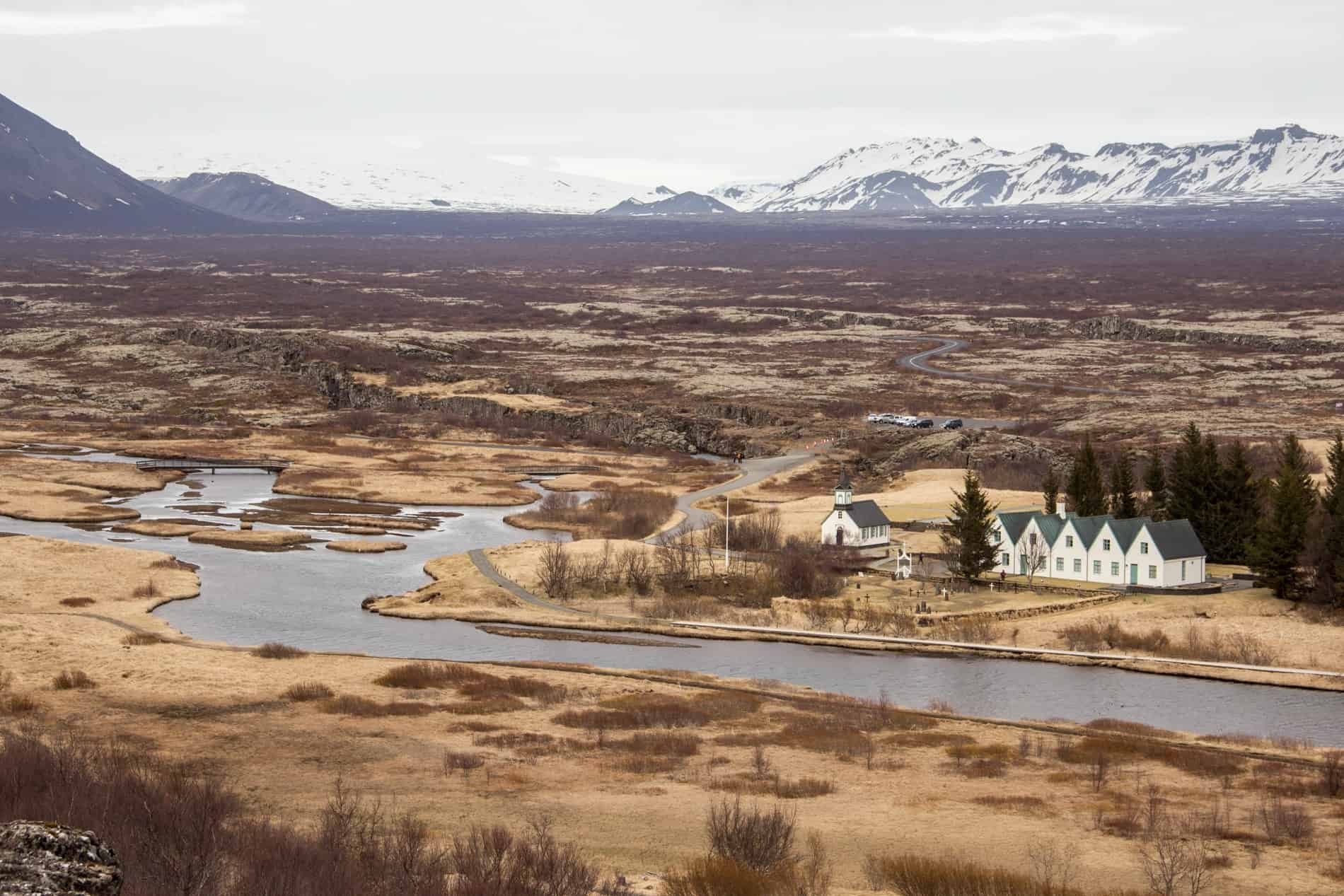
Introduction to Iceland Travel – A Geothermic Adventure.
Contents
- Introduction to Iceland Travel
- Visit Reykjavik – The Adventure Base
- Visit The Blue Lagoon – Bathe in the Earth’s Warmth
- The Golden Circle Tour of Natural Highlights
- Iceland Ring Road Touring for a Grand Adventure
- Seeing the Northern Lights in Iceland
- Iceland Hiking to Get Off-Track
- Nothing But Natural In Iceland
Introduction to Iceland Travel
First-Timers Guide to the Accessible Geothermic Paradise
Iceland is known for its natural phenomena, where adventure enthusiasts come to play hard. Straddling the Mid-Atlantic Ridge, where the North American and Eurasian tectonic plates are pulling apart, the island was built from the bubbling magma seeping up in between.
Today the land of fire and ice represents everything you ever read in a science book as a kid, except you can get right up close and hike, climb and dive through it. With the magma now heating vast reservoirs of water all over, your visit will mainly be based on immersing yourself in the geothermic paradise that exists here.
So, how long do you need to spend in Iceland?
Even for those on a short break (being close to Europe for a weekend break and now a popular layover for those crossing stateside), Iceland is easy to explore. More so because its western and south-western reaches host the country’s highlights, and the great infrastructure that exists in Reykjavik helps to get you around if you don’t hire a car.
Many also arrive with the view of driving around for a week or two. Map out at least a week for an extensive road trip or full-day trips from the capital concentrating on the cluster of sites in the south. You’ll need two weeks to cover a Ring Road 1 loop tour of the country, covering more National Parks, mountain hikes, Fjords, fishing towns and coastal settlements.
Either way, it’s more isolated than overwhelming, so be ready for some adventurous travel. Read these quick 25 tips for first-timers to Iceland to get you a little prepared.
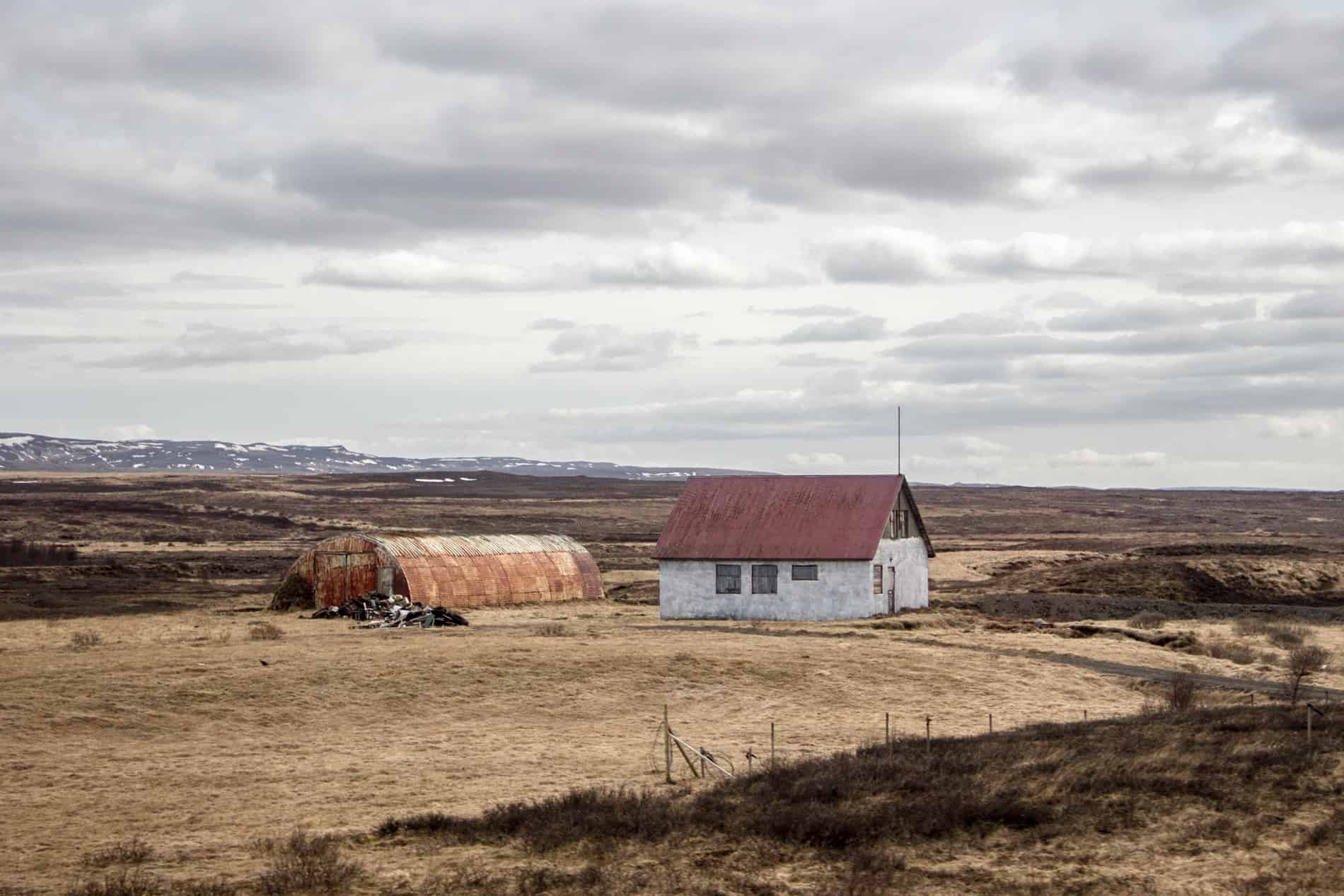
Iceland is vast, and long drives get you to remote pockets of the country.
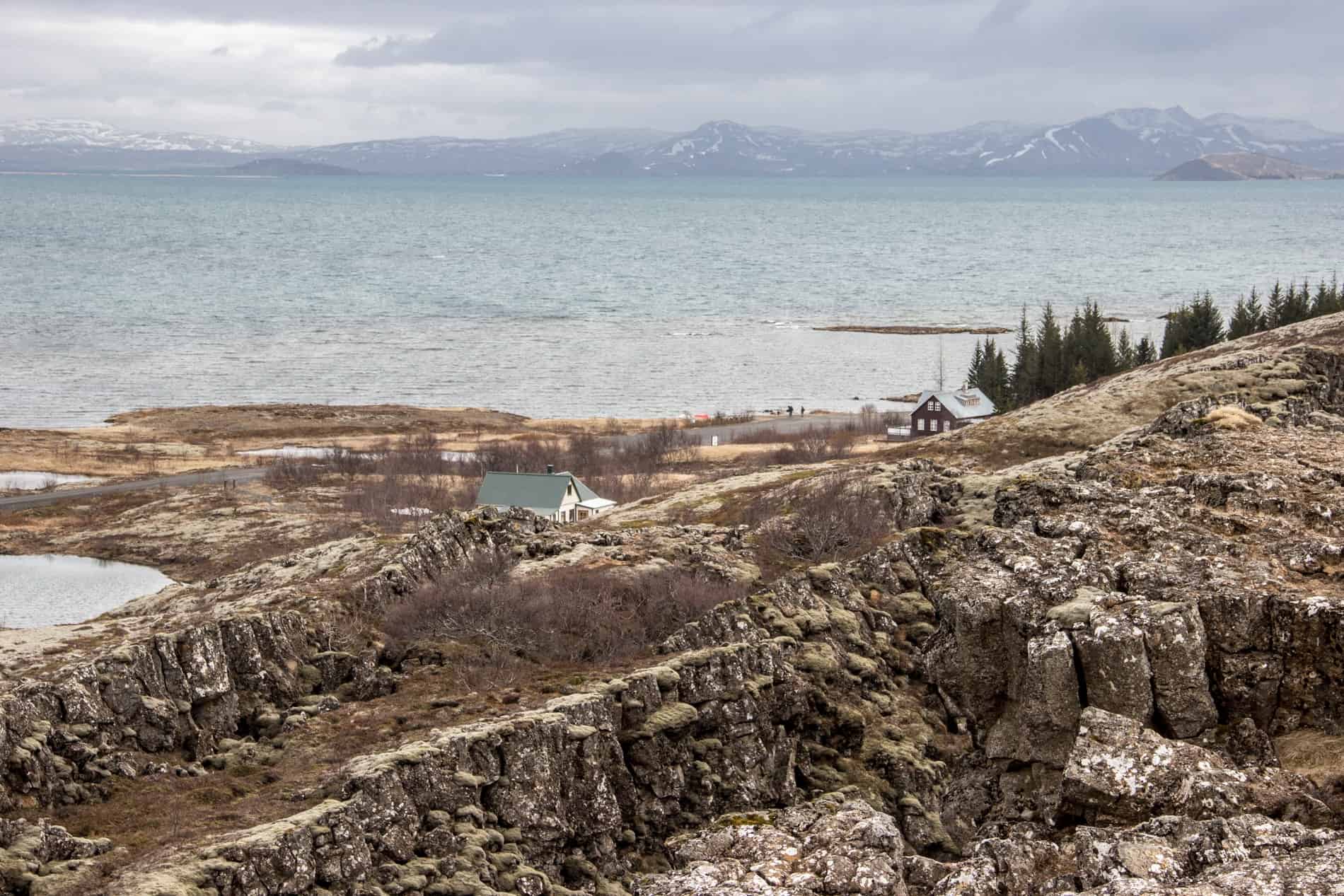
Serene southern Iceland coastline.
Visit Reykjavik – The Adventure Base
I landed in Reykjavik in late May when the weather was a cool and crispy five degrees – chilly but not in the minus temperatures, which would have had me running to the nearest clothing stores before frostbite kicked in. As much as I would love to see Iceland in the height of its snow-drenched winter, the candy-coloured capital was perfect to explore at this time.
With only six municipalities and around 200,000 people (in a country with a total population of 330,000), Reykjavik, or more so its commercial centre, isn’t large, imposing, or too demanding of your time.
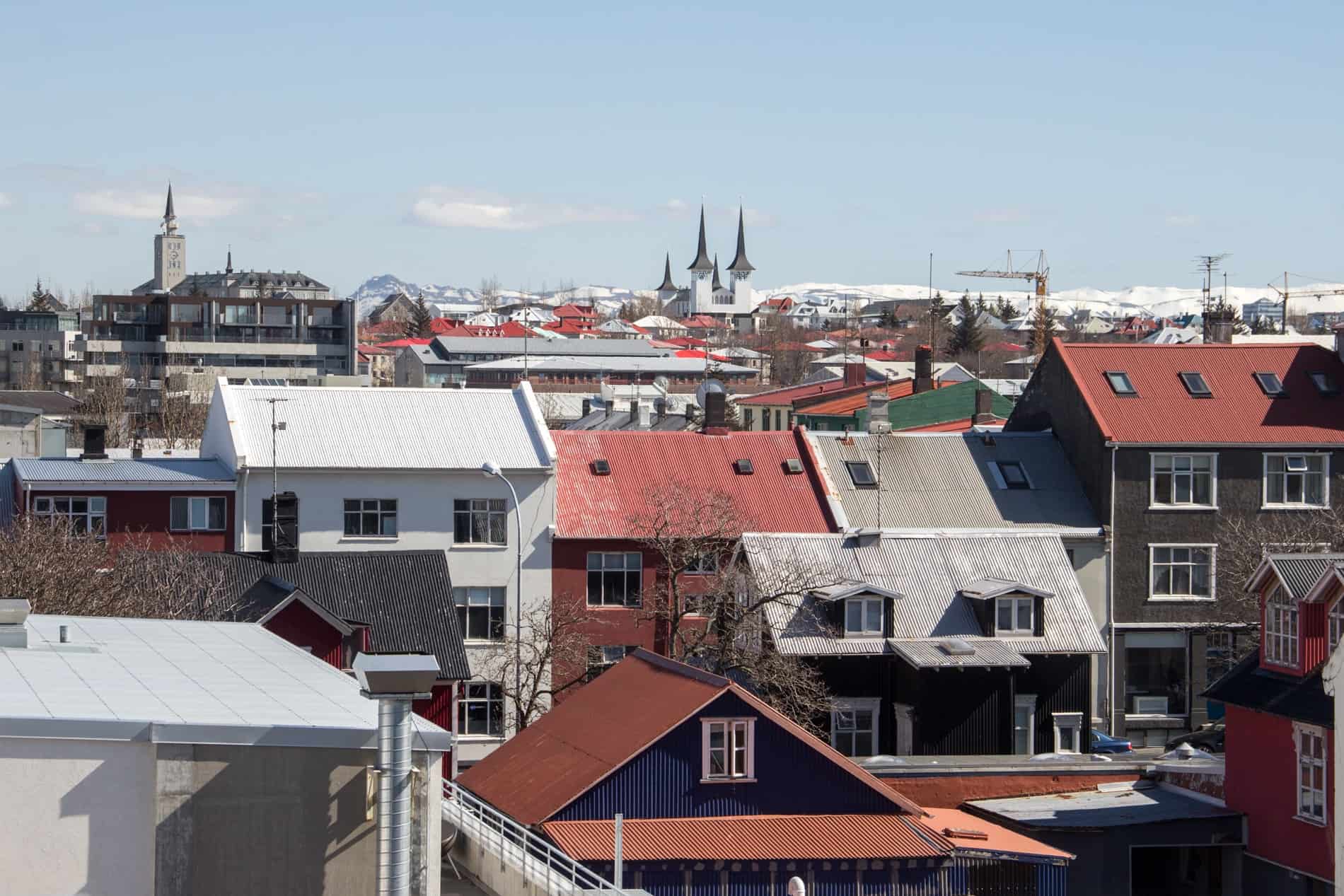
The colours of compact Reykjavik, Iceland.
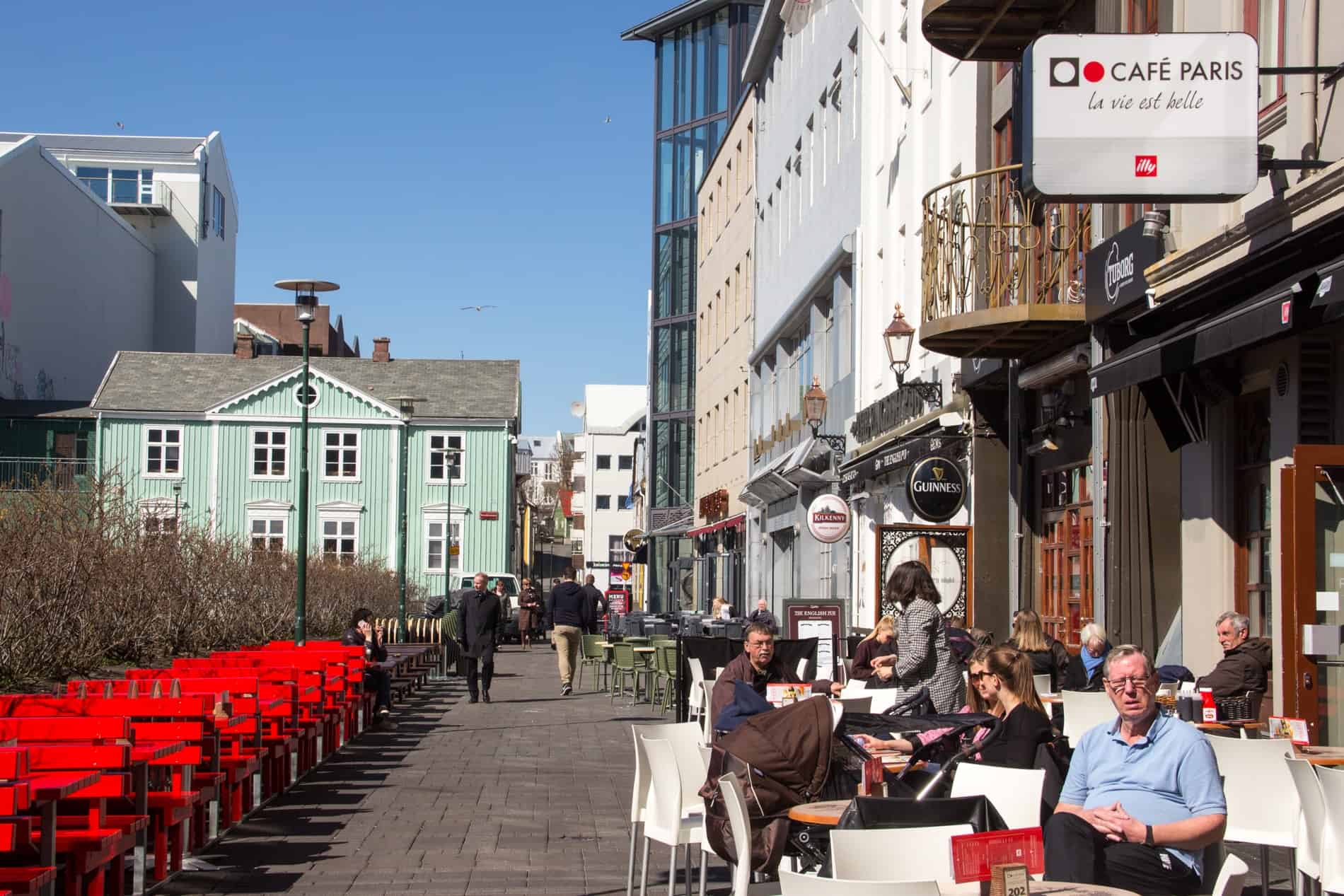
Reykjavik is a great base for a myriad of adventures close to the capital.
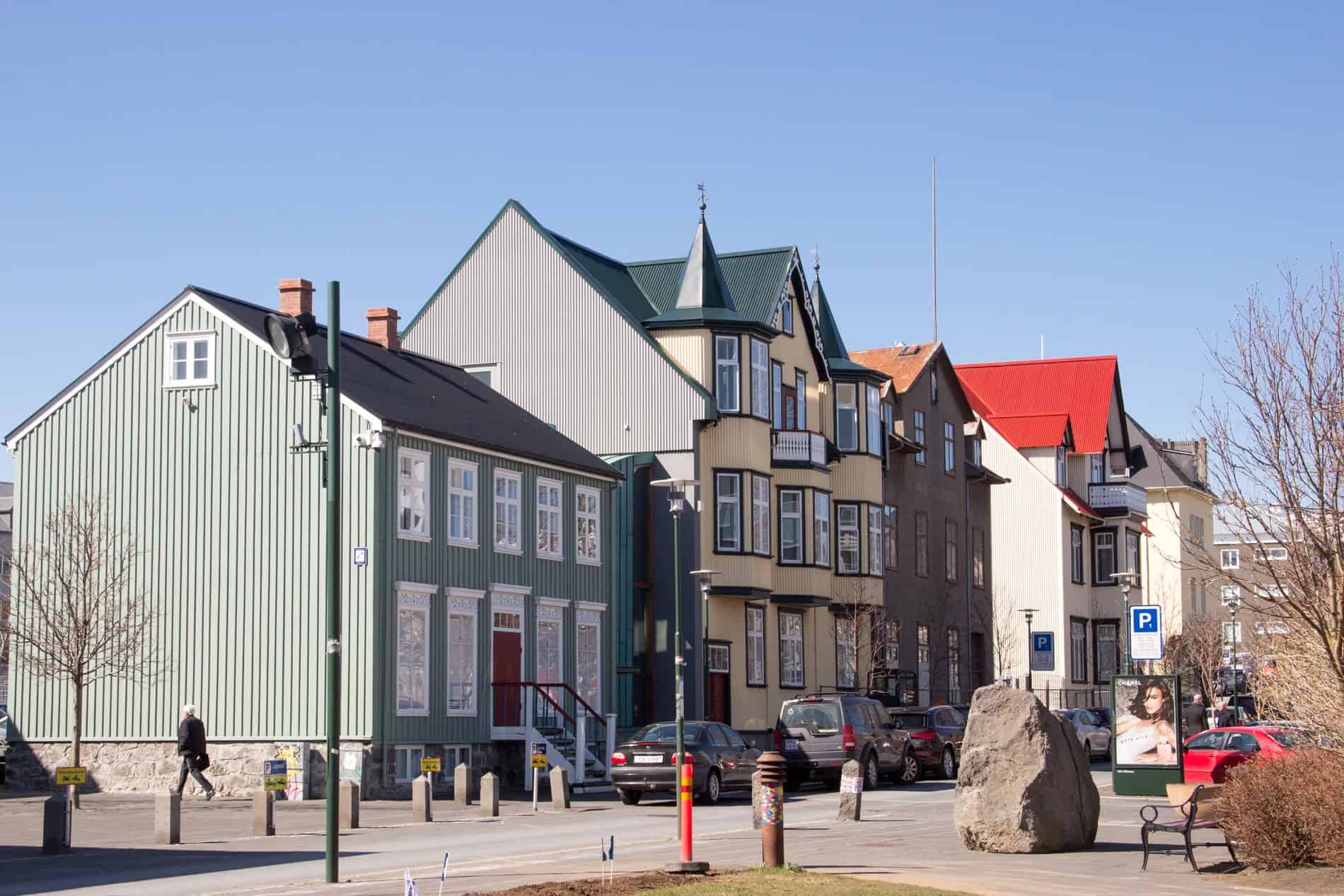
Streets of Reykjavik
I loved nothing more than picking out the different hues of the houses as if chasing a spectrum of rainbow colours. It led me into quiet neighbourhood side streets, boutique stores and coffee shops where locals cosy from the chill and throw off a few layers.
It’s easy to get into the explorer mood here, and you will soon find everything you need, from cosy cafes to locally run stores. Extra quirks are a bonus – a well-known local clothing store (North 66) has a slide in the middle of it, taking you down to its lower level.
But mainly, this city is your base for wider adventure in the country, with a bus system that operates a well-run network of day trips and adventure excursions (should you not be here road-tripping to the wilderness, as many do), one of the most popular being the 3-Hour Whale Watching Cruise in Faxaflói Bay, to spot humpback whales and learn about Iceland’s marine life.
Where to Stay in Reykjavik
Reykjavik hotels are plenty but pricey. The top pick of places in the city’s centre includes the retro-decked Kex Hostel with an on-site bar and restaurant, the slick, industrial-design Exeter Hotel and the modern, self-catering Reykjavik Residence Apartment Hotel.
Visit The Blue Lagoon – Bathe in the Earth’s Warmth
One of the first stops, and quite possibly the most popular of them all, is the first stop is the infamous Blue Lagoon. Approaching it from the road I could see the steam rising from the 5,000 square metres, 800-year-old lava basin like a giant bathing factory.
Iceland tourism literature describes it as “a turquoise vision in a black basaltic moonscape” and they are not wrong. There are over six million litres of geothermic water here that replenishes itself every 40 hours; a natural spa fed by sea waters 6,500ft (1,981m) below the surface. At that level, the temperature of the water is a searing 464 degrees (240c), but on its way up it cools down and captures minerals on the way, where it finds humans soaking in its 100 degrees (38c) surface temperatures while coating themselves in silica mineral mud.
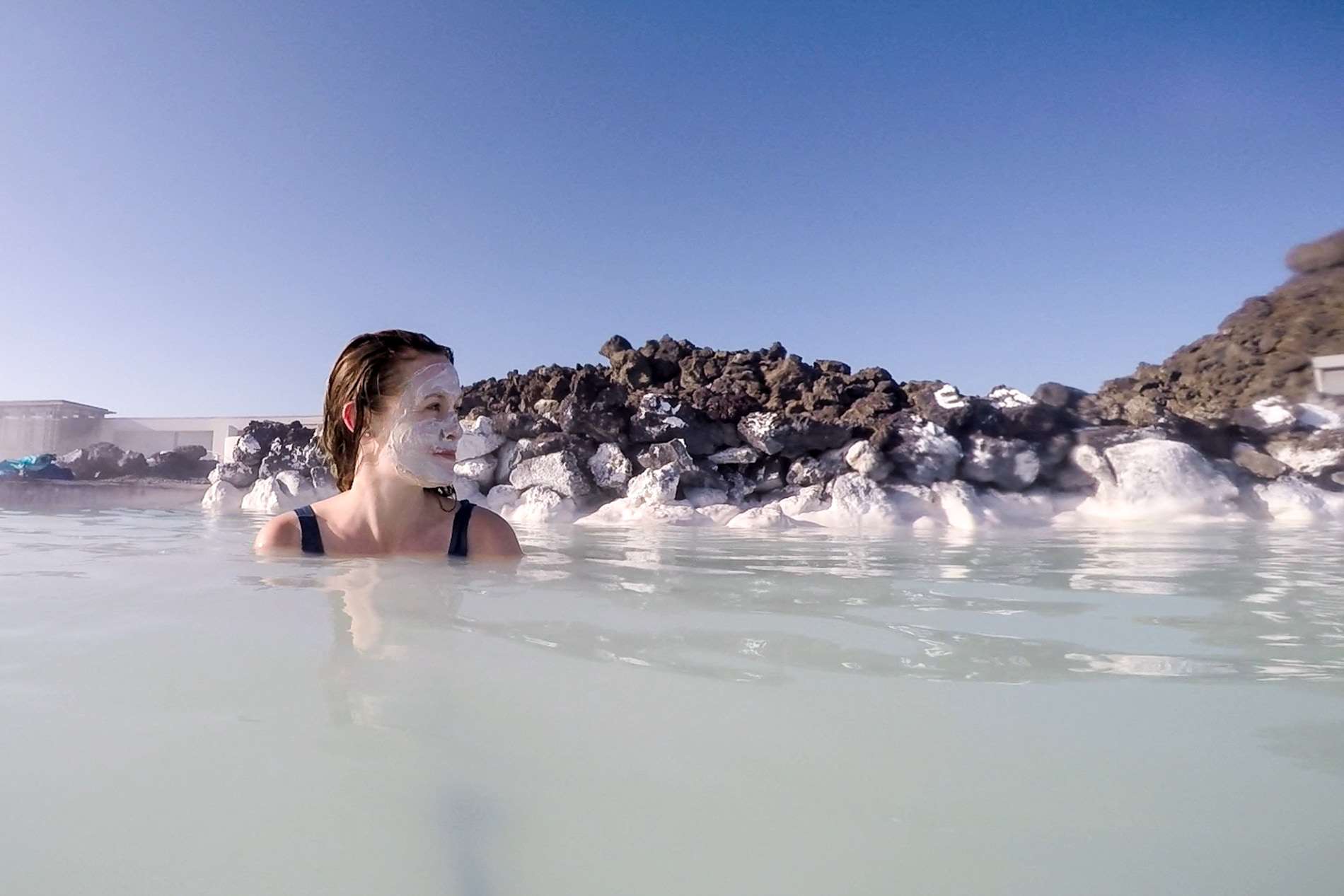
Bathing in Iceland’s Blue Lagoon.
At only 1.6 metres at its deepest level, there’s no fear of getting lost, except you might feel that way as you glide through the white mists of steam on your way to the waterfall, the sauna room or the outdoor bar.
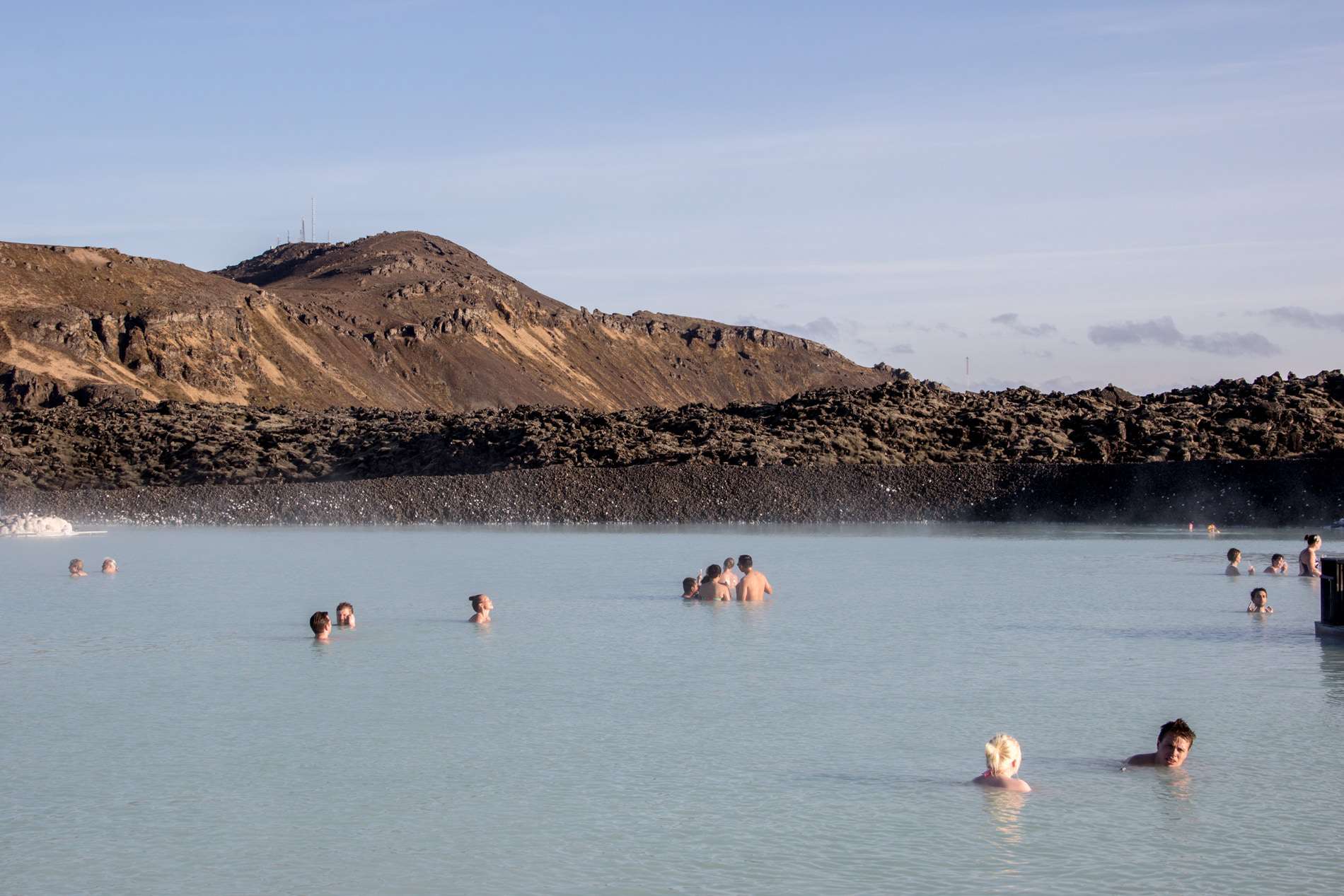
The hues of the Blue Lagoon.
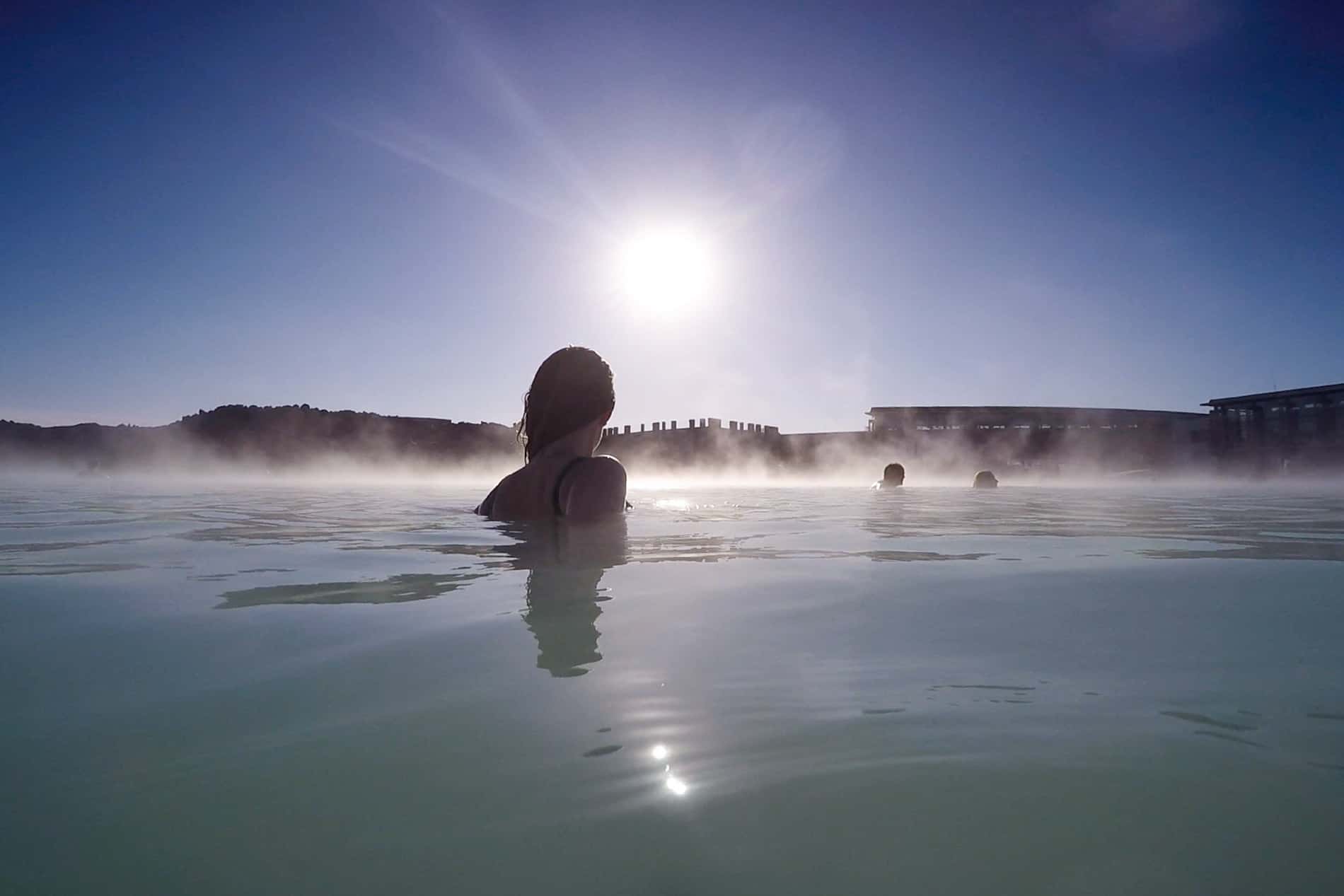
Sunset at the Lagoon.
So in my hired swimsuit (yes, they really do make things easy for you out here), face covered in the healing mud, I sipped a glass of strawberry fizz in celebration of finally being able to say that I’ve experienced ‘One of the 25 Wonders of the World’ (National Geographic). Not a bad way to end a day of city sightseeing.
Alternatives to the Blue Lagoon
Since Iceland is a geothermic paradise, there are plenty of Blue Lagoon alternatives for those wanting to escape the crowds, find alternative natural spaces and backdrops and enjoy the same relaxation properties elsewhere in the country. From the oldest swimming pool in Iceland to spas next to glaciers and lava formations, there’s more beyond the famous natural wonder to visit.
The geothermal spa is the volcanic rock set, oceanside Sky Lagoon, less than a 15-minute drive from the centre of Reykjavik. Its 70-metre infinity lagoon edge is a front-row view of the fjords, mountains and volcanoes surrounding it.
The Golden Circle Tour of Natural Highlights
It starts by driving by the houses of the hidden ‘elves’ of Iceland known as the Huldufólk. Legends of folklore, these tiny wooden dwellings can be found etched in rocks or built into tiny mounds in the grassy cliff faces. We couldn’t stop to take a closer look, but we slowed to peer out at the colourful doors to another world, learning about how even building projects have been altered to prevent damaging the rocks where this special population take cover.
Maybe the bubbling Geysir geothermal area that simmers underneath them, not too far along the Golden Circle route, keeps them warm. The hot springs here lead you on a trail to the Geysir Strokkur, which shoots a column of water up to 30m (98ft) into the air every five to seven minutes. I found myself there more than once, standing with a stirring crowd hovering next to it, watching for the water to bubble ferociously like a cauldron before exploding into the air.
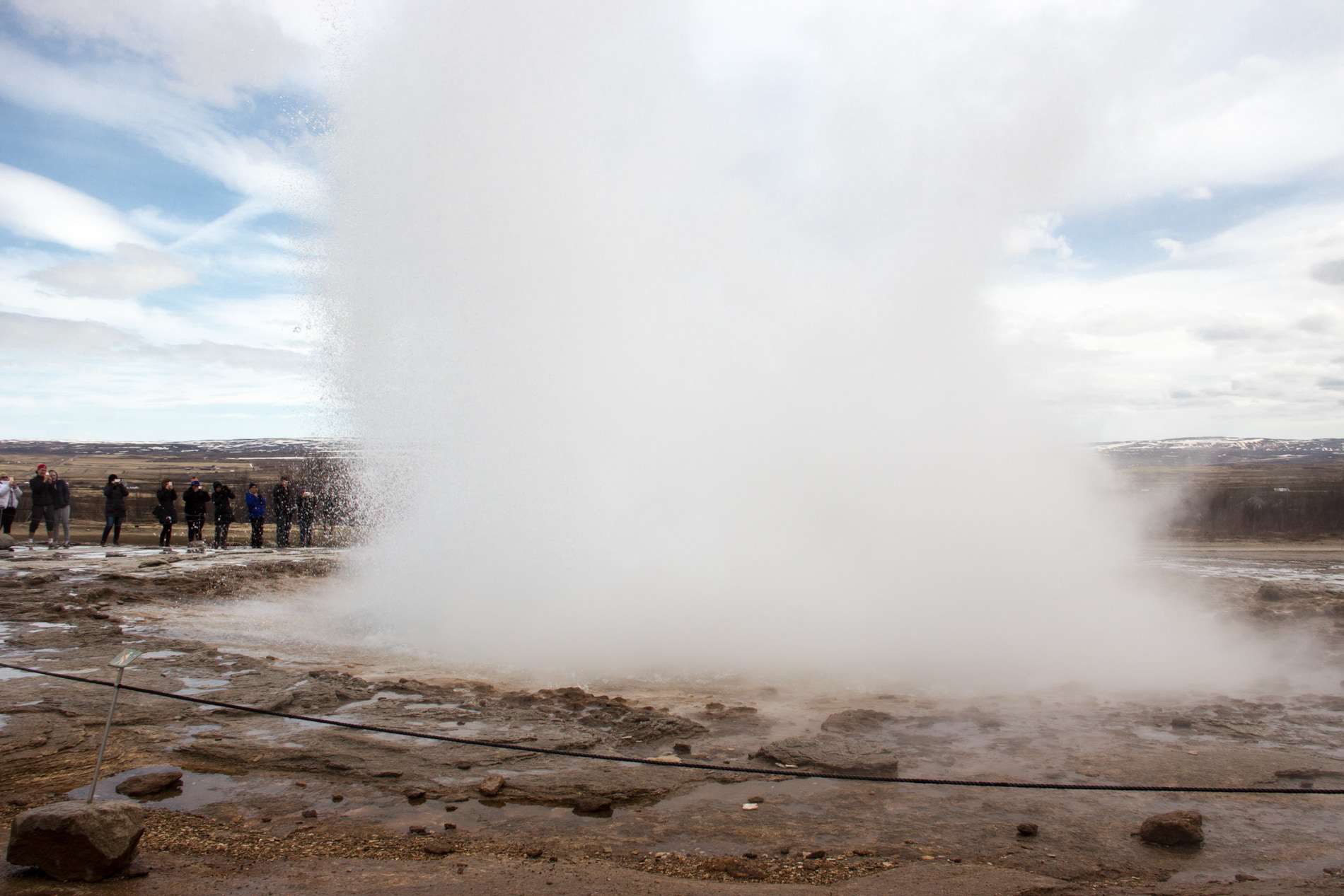
Geysir Strokkur erupts at the Geysir geothermal area in Iceland.
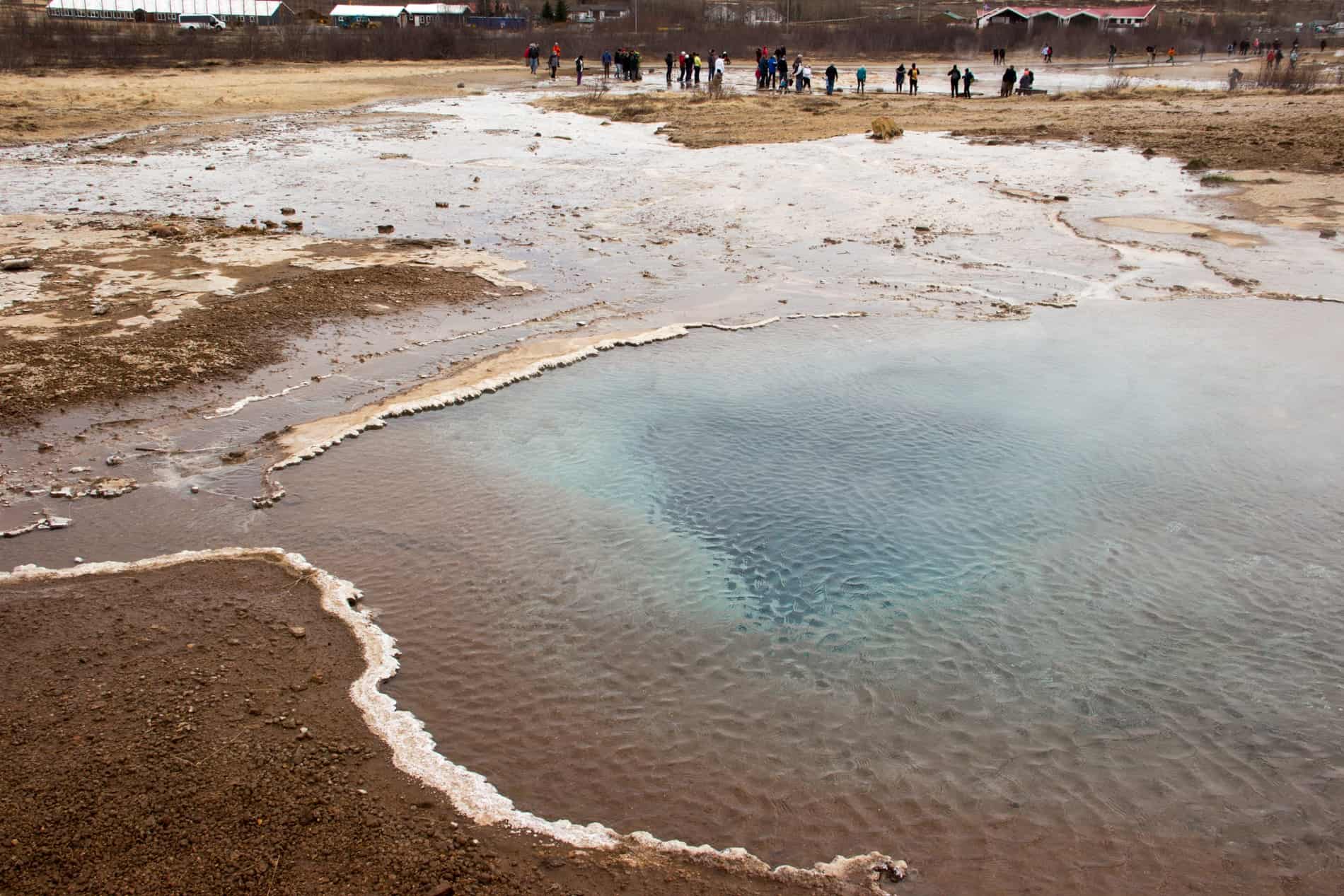
Colours of the Icelandic geothermal pools.
Iceland is an open-air museum of an intact natural world, and even the waterfalls here achieve spectacular status. The Gullfoss Waterfall, in particular, is the most famous in the country, becoming a protected site after it was once designated as a potential outlet for the generation of electricity.
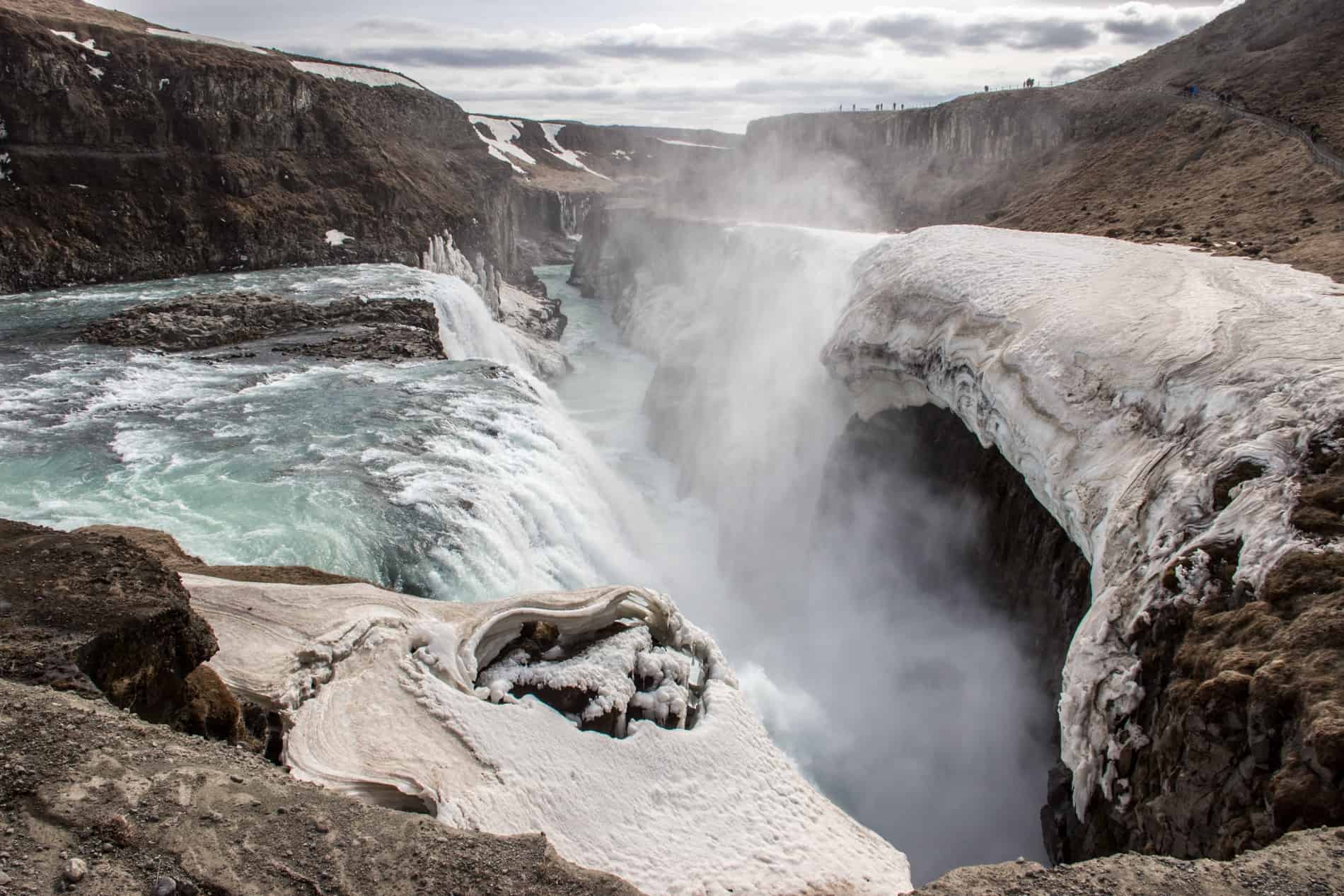
The cascading power of the Gullfoss waterfall.
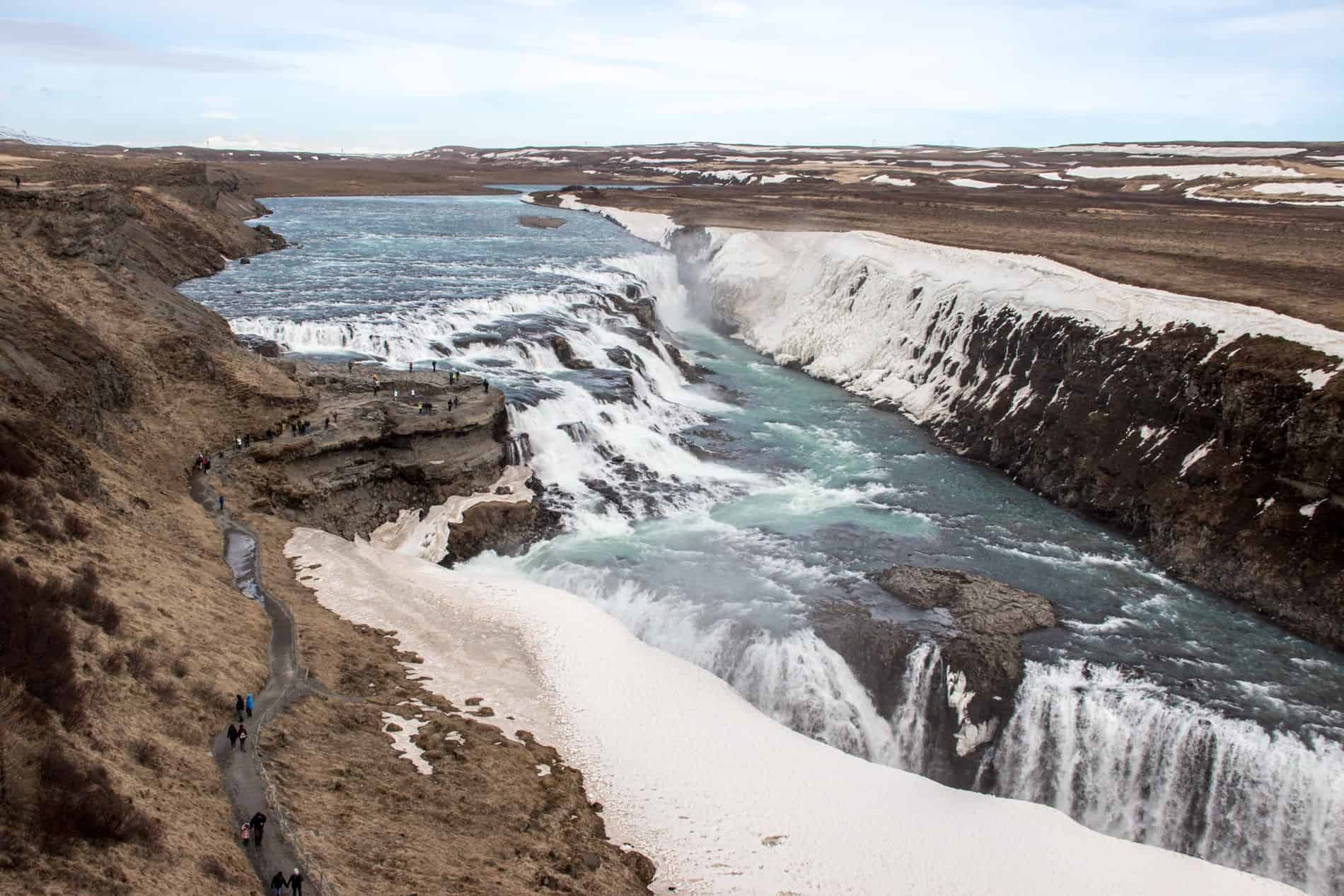
The rock path trails to the edges of Gullfoss waterfall.
In Iceland, nature rules. It’s the untouched nature of the land that makes it so unique – in this case, a crevice that’s over 20 metres wide and 2.5 km long, where the rapid waters of the river Hvítá plunge right into it. And that’s before you get to Pingvellir National Park – where the American and Eurasian tectonic plates are pulling apart at a rate of a few centimetres anually.
You can see how the pull has ripped apart the earth, creating a fissure that has revealed another of its many layers.
BOOK: Full-Day Golden Circle Tour from Reykjavik – Including the Geysir area, Gullfoss waterfall, Þingvellir National Park and the Kerid Crater.
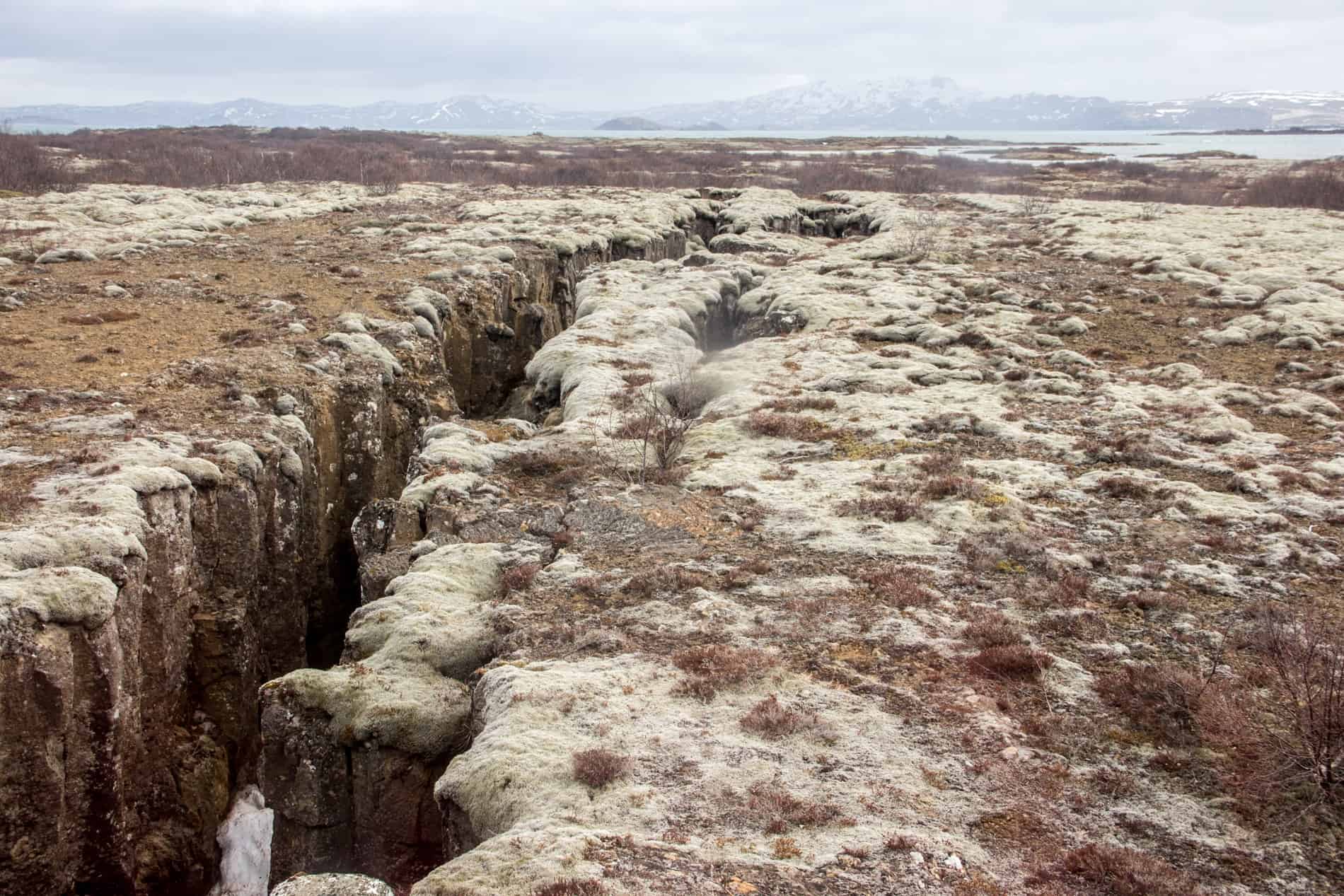
Pingvellir National Park tectonic plate rift.
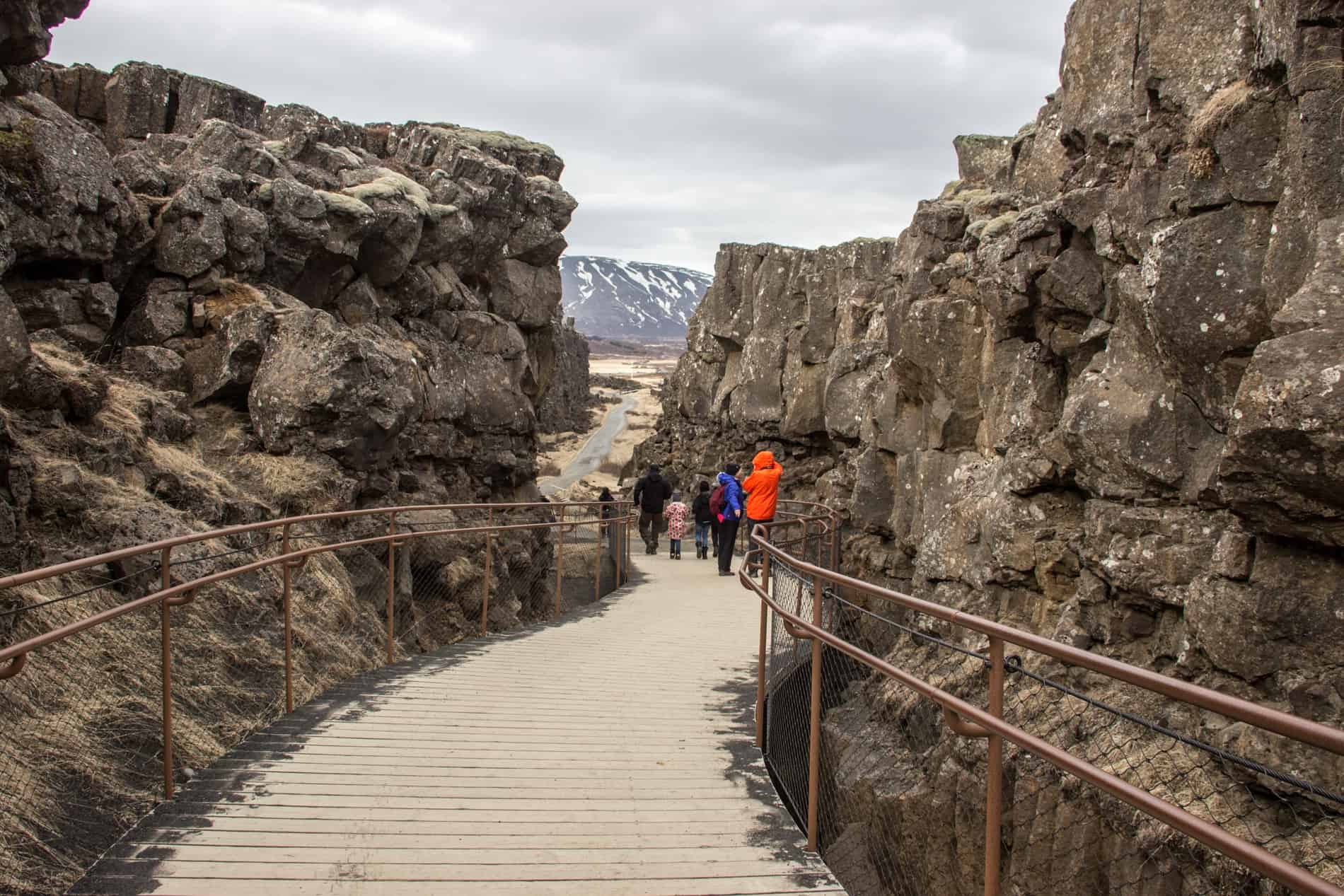
Walk through the tectonic plate split in Pingvellir National Park, Iceland.
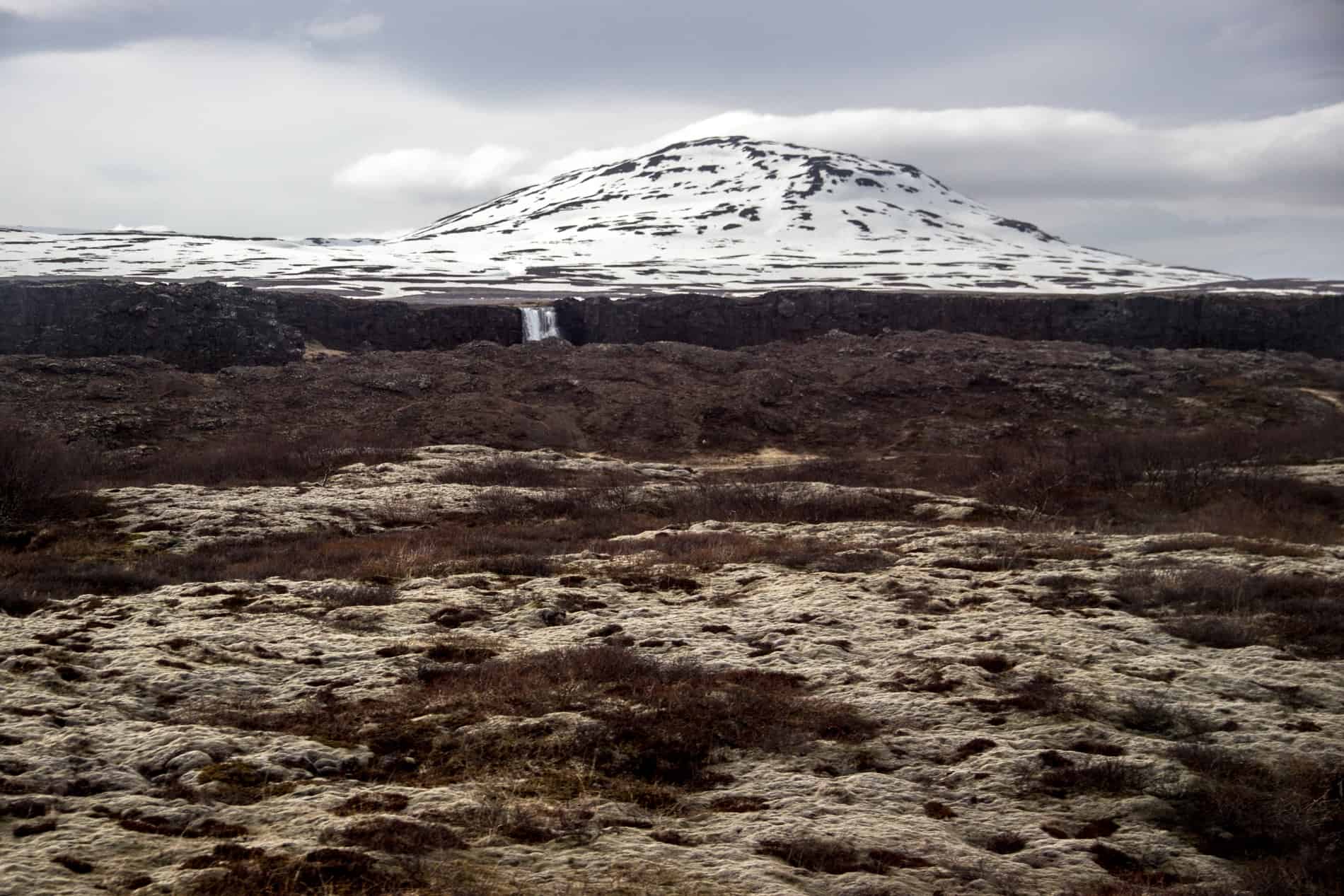
Waterfalls and volcanoes in Pingvellir National Park.
Iceland Ring Road Touring for a Grand Adventure
Unfortunately, my time was too short on this first visit, but for those looking to stay longer in Iceland and experience even more of its natural wonders, this Iceland Ring Road Itinerary is a great planning resource.
BOOK: Full-Day South Iceland Highlights Tour – Sample some southern Ring Road highlights on this trip from Reykjavik, including Seljalandsfoss waterfall, Reynisfjara black sand beach and the Sólheimajökull glacier.
BOOK: Southern Coastline Tour – This day-trip from Reykjavik includes the Skógafoss and Seljalandsfoss waterfalls and a Katla ice cave tour.
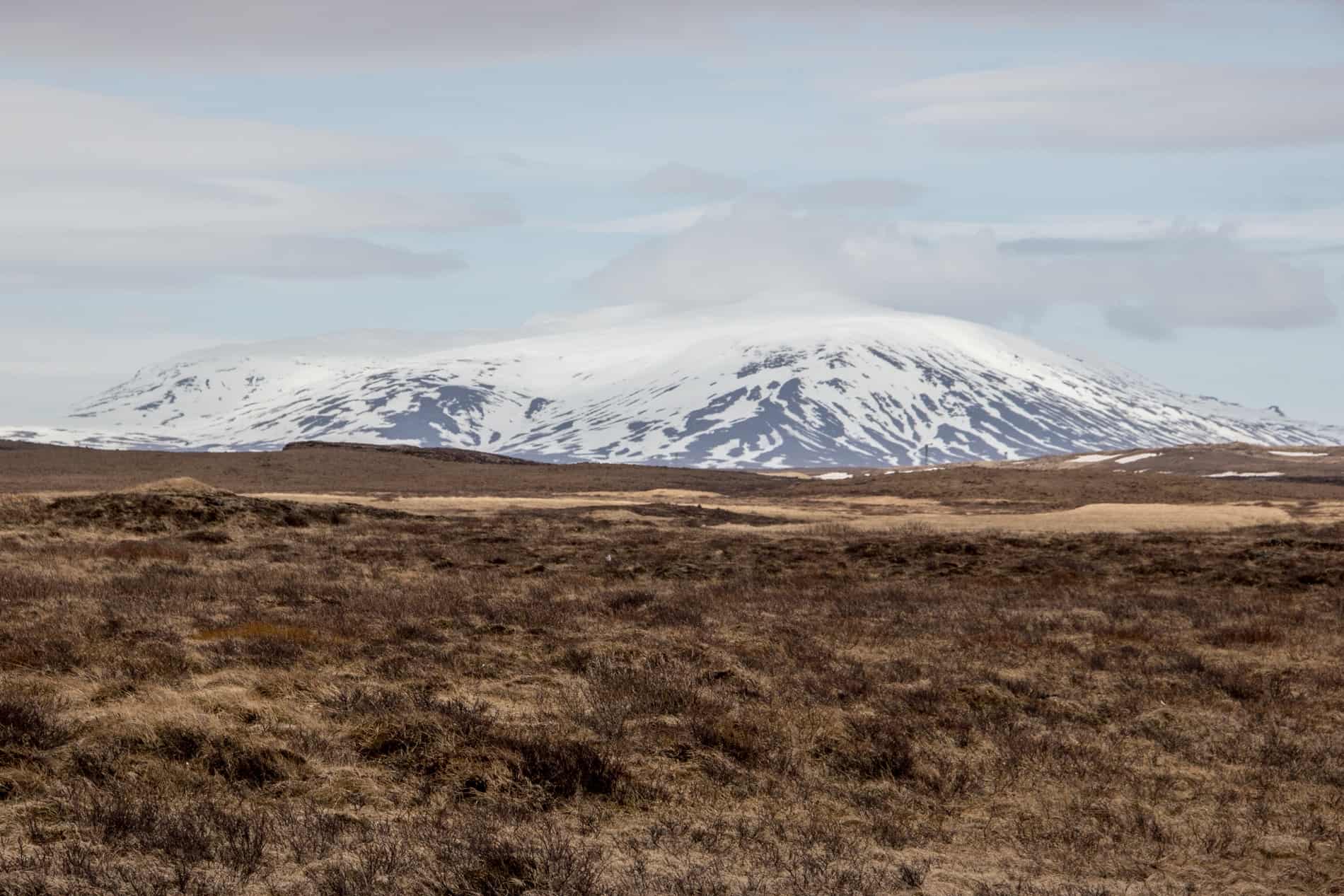
Blafell Mountain, Iceland
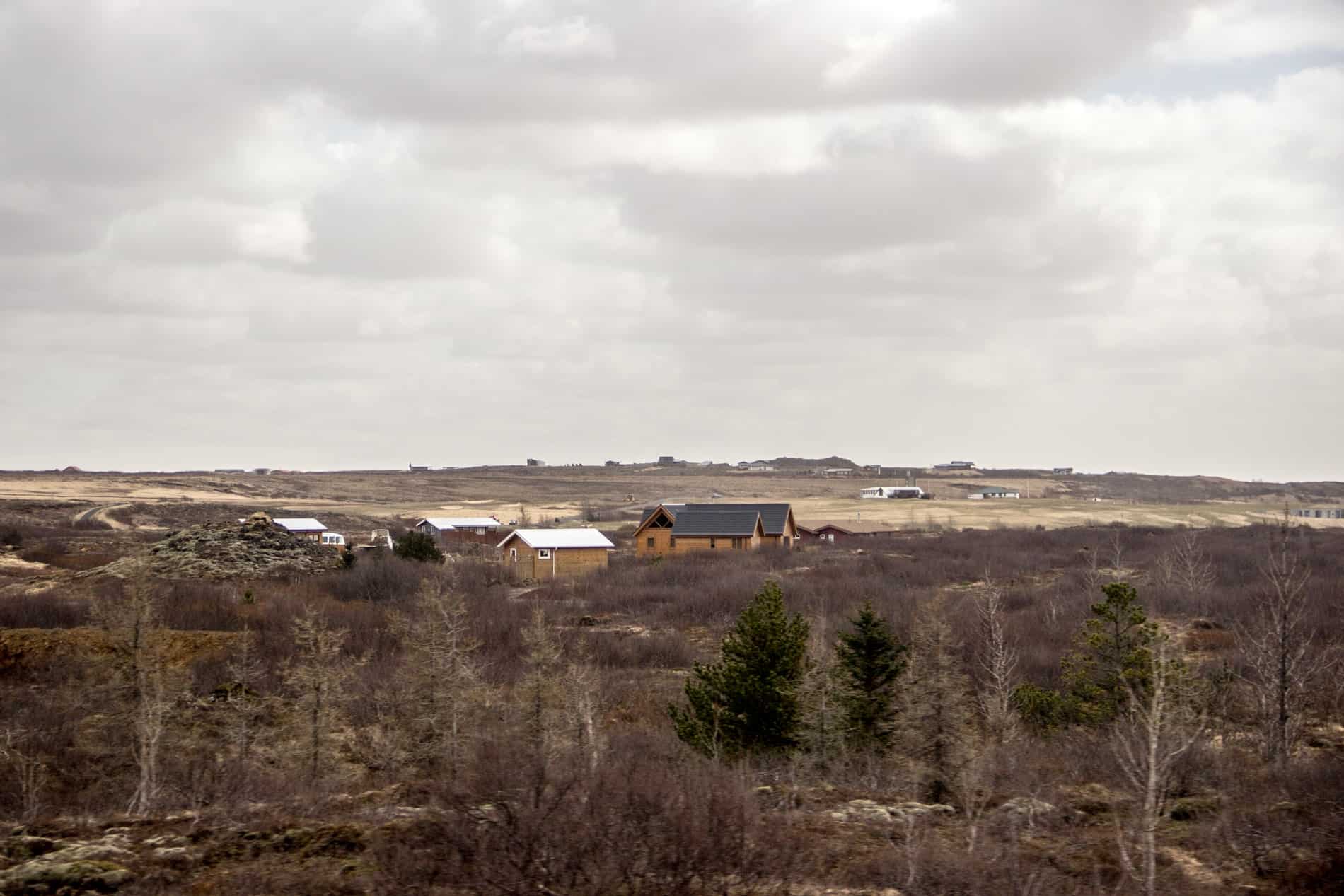
Rural roads in southern Iceland.
Seeing the Northern Lights in Iceland
Catching the swirling green and blue hues of the Aurora Borealis (Northern Lights) is at the top of the Icelandic nature view wish list. I’ve only seen the Northern Lights in Finland Lapland, a once-in-a-lifetime experience. Seeing it twice, even across different countries, would be very lucky!
Even though you could strategically time your arrival in Iceland according to the suggested dates on apps when the Arctic Circle light show will peak between September and April, it still isn’t something you can guarantee to happen. But such is the law of nature. However, for those planning their trip to include them, this overview for those travelling to Iceland for the Northern Lights has tips on where to go, top viewing points and what tours to take. It even includes some handy photography tips.
BOOK: Northern Lights tour from Reykjavik – an evening trip by bus, including the Aurora Museum.
Iceland Hiking to Get Off-Track
Laugaveigur Trail
Any avid trekkers know that the Laugaveugur Trail is Iceland’s most famous hiking trail, and for good reason. A 55km nature track that takes people around four days and three nights to traverse, hiking here is a colourful storyboard of Iceland’s varying nature. On a journey from Landmannalaugar to Thorsmork, you will pass through earthy coloured bouldered hills and green valley basins, cliff drop trails and waterfalls to black sand volcanic deserts and ice caves to the background of dominating plateau.
This hike is high on my list for when I return to Iceland, but for those wanting to add it to your adventure when you visit, check out this comprehensive Laugaveugur hiking and planning guide.
Snaefellsnes Peninsula
150 kilometres northeast of Reykjavik is the Snaefellsnes Peninsula and Snaefellsjökull National Park, often overlooked by those travelling mainly on the Ring Road. With everything from coastal hikes to cliff walks, colourful towns and a shark museum, this overview of where to go in the Snaefellsnes Peninsula is a great introduction.
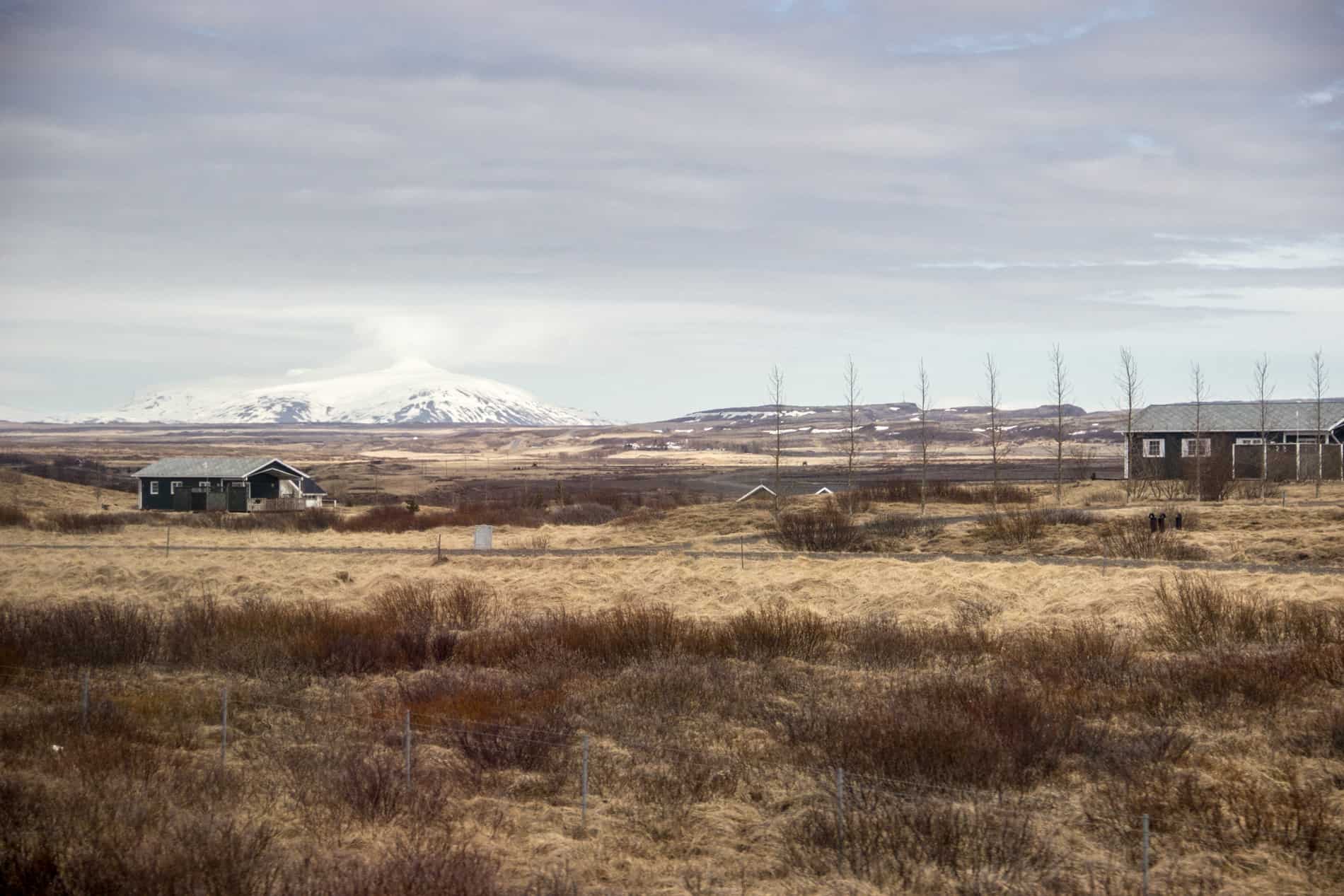
Icelandic lowlands and high places.
Nothing But Natural In Iceland
Travelling back to Reykjavik amongst the backdrop of the dominant, snow-capped Mount Hekla (an active volcano that last erupted in 2000), we learnt how resourceful Icelanders really are in using their natural environment rather than fearing it or resorting to more mainstream ways.
There are no nuclear oil or gas stations here – just hydropower power stations. Over 90% of all houses in the country use the geothermic method of using naturally boiling water for heating, showering, and making electricity.
I quickly learned that in Iceland, you don’t need much except to fully embrace the adventurous and resourceful spirit that gives this natural wonder of a country its unique identity.


Jess says
Iceland is just gorgeous, I loved it. The Blue Lagoon was amazing, I could have spent hour there. I found the waters really relaxing.
Rachel says
I can’t wait to return to Iceland and this post has only made me want to go sooner!
Rashaad says
Iceland has never been on my bucket list because I’ve always thought I would freeze my ass off there – but at least if I go there, I can have a comfortably warm holiday.
Gabby says
Amazing post Becki! Iceland has been on my to-travel-to list for a fair while now, but after reading this it’s been bumped up a fair few places!
Fab photographs. Reykjavik really does look beautiful….. and I could do with a soak in the Blue Lagoon today (perfect Monday remedy!)
Look forward to reading more about your adventures.
Gabby
Debbie says
Omg! Blue Lagoon seems so unreal! And so hot! deos it feel comfortable inside here with that heat? Definitely one of natures wonder and definitely an adventure on my wislist!
xx
Becki says
Very comfortable. Like a glorious bath with a gorgeous view!
Crystal says
Absolutely beautiful pictures! Every single Icelandic person I’ve met travelling has been a top person. I can’t wait to get there and meet more amazing Icelandics!
Chris says
I freaking loved Iceland, so beautiful!
Totally recommend scuba diving at Silfa if you get the chance.
Becki says
That’s on my list for when I go back! 🙂